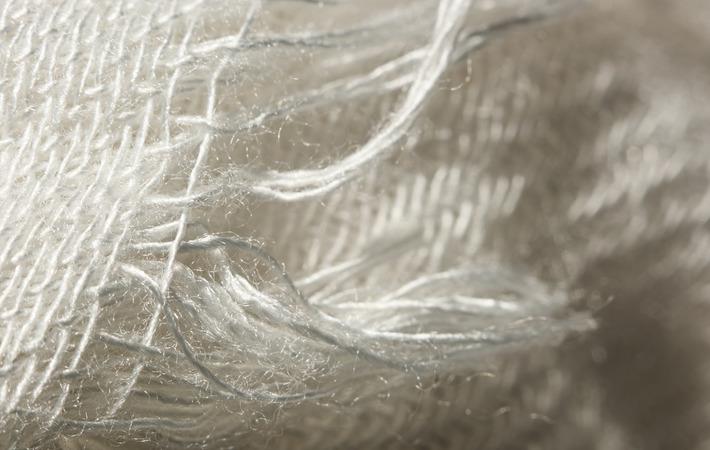The global trade of artificial staple fibres, not carded, combed or otherwise processed for spinning of viscose rayon have shown a moderate drop from the year 2018. Trade further decreased in 2019 and is expected to continue the downward trend. The total trade reported 3.67 per cent decreased from 2017 to 2019, according to data from TexPro.
The global trade of artificial staple fibres, not carded, combed or otherwise processed for spinning of viscose rayon have shown a moderate drop from the year 2018. Trade further decreased in 2019 and is expected to continue the downward trend. The total trade reported 3.67 per cent decreased from 2017 to 2019, according to data from TexPro.#
The global trade of artificial staple fibres was $4,194.69 million in 2017, which moved down to $4,040.72 million in 2019.
The global trade of artificial staple fibres, not carded, combed or otherwise processed for spinning of viscose rayon have shown a moderate drop from the year 2018. Trade further decreased in 2019 and is expected to continue the downward trend. The total trade reported 3.67 per cent decreased from 2017 to 2019, according to data from TexPro.#
The total trade of artificial staple fibres has declined 6.26 per cent in 2019 over the previous year and is anticipated to drop to $3,828.38 million in 2022 with a rate of 5.25 per cent from 2019, according to
Fibre2Fashion's market analysis tool TexPro.
The global trade of artificial staple fibres, not carded, combed or otherwise processed for spinning of viscose rayon have shown a moderate drop from the year 2018. Trade further decreased in 2019 and is expected to continue the downward trend. The total trade reported 3.67 per cent decreased from 2017 to 2019, according to data from TexPro.#
The global export of artificial staple fibres was $1,754.86 million in 2017, which was marginally rose 0.14 per cent to $1,757.37 million in 2019. Total exports reduced 2.60 per cent in 2019 over the previous year and is expected to increase to $1,761.13 million in 2022 with a rate of 0.21 per cent from 2019.
The global trade of artificial staple fibres, not carded, combed or otherwise processed for spinning of viscose rayon have shown a moderate drop from the year 2018. Trade further decreased in 2019 and is expected to continue the downward trend. The total trade reported 3.67 per cent decreased from 2017 to 2019, according to data from TexPro.#
The global import value of artificial staple fibres was $2,439.83 million in 2017, which fell 6.41 per cent to $2,283.35 million in 2019. Total imports decreased 8.90 per cent in 2019 over the previous year and is expected to fall to $2,067.25 million in 2022 with a rate of 9.46 per cent from 2019.
The global trade of artificial staple fibres, not carded, combed or otherwise processed for spinning of viscose rayon have shown a moderate drop from the year 2018. Trade further decreased in 2019 and is expected to continue the downward trend. The total trade reported 3.67 per cent decreased from 2017 to 2019, according to data from TexPro.#
China ($586.20 million), Indonesia ($525.68 million), Thailand ($173.20 million), India ($164.66 million) and Germany ($109.11 million) were the key exporters of artificial staple fibres across the globe in 2019, together comprising 88.70 per cent of total export. These were followed by Taiwan ($73.21 million), Japan ($51.19 million) and Spain ($26.31 million).
The global trade of artificial staple fibres, not carded, combed or otherwise processed for spinning of viscose rayon have shown a moderate drop from the year 2018. Trade further decreased in 2019 and is expected to continue the downward trend. The total trade reported 3.67 per cent decreased from 2017 to 2019, according to data from TexPro.#
From 2016 to 2019, the most notable rate of growth in terms of export value, amongst the main exporting countries, was attained by Indonesia (109.33 per cent) and China (5.73 per cent).
The global trade of artificial staple fibres, not carded, combed or otherwise processed for spinning of viscose rayon have shown a moderate drop from the year 2018. Trade further decreased in 2019 and is expected to continue the downward trend. The total trade reported 3.67 per cent decreased from 2017 to 2019, according to data from TexPro.#
Turkey ($540.62 million), China ($ 330.71 million), Pakistan ($249.52 million) and the US ($182.59 million) were the key importers of artificial staple fibres across the globe in 2019, together comprising 57.08 per cent of total import. These were followed by Germany ($108.93 million), India ($103.54 million) and Indonesia ($86.20 million).
The global trade of artificial staple fibres, not carded, combed or otherwise processed for spinning of viscose rayon have shown a moderate drop from the year 2018. Trade further decreased in 2019 and is expected to continue the downward trend. The total trade reported 3.67 per cent decreased from 2017 to 2019, according to data from TexPro.#
From 2016 to 2019, the most notable rate of growth in terms of import value, amongst the main importing countries, was attained by the China (24.60 per cent) and Turkey (10.71 per cent).
ALCHEMPro News Desk (JL)
